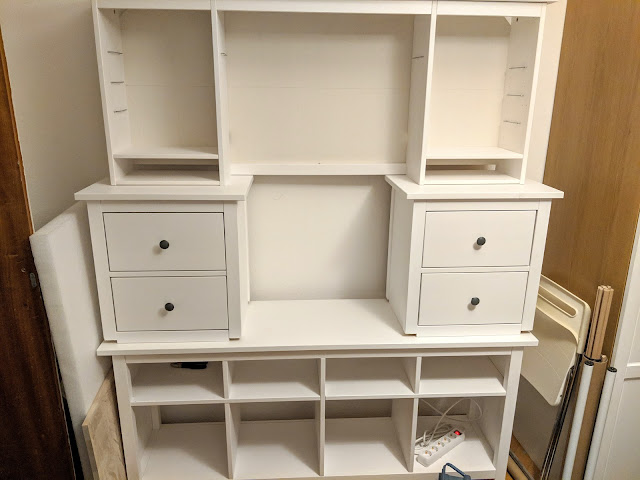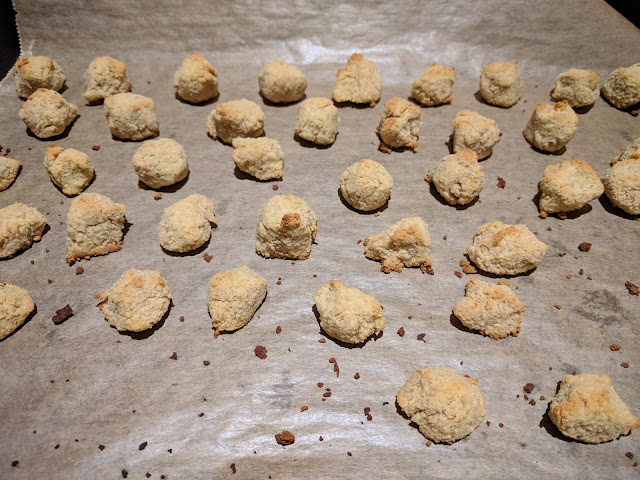A pair of pauldrons
Back in 2019, I decided to finally make some leather pauldrons (technically they're spaulders, not having the extra protection against stabs into the armpit). I succeeded, but they ended up with a fatal design flaw that I have yet to fix - see the end. These are the notes from making them.
I use a Blechschere (tin snips) to cut it. Even dedicated leather scissors are having a hard time with this, but are good for trimming edges. It takes a bit of getting used to how to use it without making a lot of little notches along the edge. One trick is to bend the leather where it hits the scissors so it doesn't press the scissors at an angle. Making many small nibs with the tip seemed to work well.
I made holes for rivets with a combination of a regular hand-held rivet punch and a punch tool, both 4mm. The hand riveter, with plenty of force (as seen below), would make it through on one punch occasionally, but frequently required multiple punches from either side, and occasionally I used the punch tool on an anvil (with another leather piece under the leather) for particularly hard spots. I noticed some marks on the front leather from where I had hand-punched from the back and then wiggled the punch to finish the hole. Better to punch from the back and do another punch from the front, where you can wriggle it without marking the front. Even better would be a powerful press:)
I attempted doing a bit of tooling, just a simple decorative line along the edge, but didn't have a good tool for it. Any decorative tooling definitely needs to be done before shaping.
Shaping and hardening the leather was done by immersing it in hot tap water for a while, something like 20 minutes, then shaping it a little more than necessary (it will spring back), then baking it at 60ºC for several hours, occasionally wiping off moisture from the oven, and then letting it stand overnight. You can probably harden it more with warmer water and higher baking temperature, but too warm and it will start getting deformed and/or brittle. For our purposes, this amount of hardening should be fine.
I dyed the pauldrons black with regular leather dye and a foam brush. I used several layers of newspapers underneath, and checked afterwards - the dye had come through 4 layers of paper. The dye is quite runny, but by brushing it on in vertical stripes no drips were visible. I gave them several layers, until the point where I could brush an entire pauldron with just one soaking of the brush, simply because it didn't absorb any more.
I used rivets to fasten the parts together at first, but that didn't move well. Instead I added some leather strips on the inside. The straps for fastening are some 2mm thick leather strips, fastened with rivets. The final result is pretty, but pretty hard.
But here is the flaw: The top part is long enough that it goes a bit over my shoulder. If someone were to bash into me from the side, they could push the leather straight into my neck. That would hurt. Maybe I can bend the top edge? I would also want to soften the underside somehow, it's pretty rough.









Comments
Post a Comment